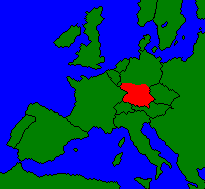

  The Sixteenth Century
|
One of the great documents of sixteenth-century organ-building is the Spiegel der Orgelmacher und Organisten, written by Arnolt Schlick and published with the blessings of the Emperor in 1511. Schlick was from the Heidelberg area, and seems to have been highly regarded as both an organist and an advisor to organ builders. His Spiegel gives the most complete description of the northern European organ in the sixteenth century that we have today. There is not a surviving instrument which can be associated with Schlick, but his account of organ-building is a most detailed source. He includes information on stops, winding, and other matters of construction, as well as descriptions of how the organ was used.
Schlick describes the organs he knew -- those of what is now southern Germany, and in general he indicates a preference for an instrument of
The stoplist that Schlick gives in his Spiegel is considered so important that it has been included in almost every discussion of historical instruments published in English. You have to remember, though, that the format Schlick used was not the neat, tabular form that we are accustomed to today. In fact, if you look at more recent discussions of this stoplist, you will see some disagreement on details. The language used by Schlick and his somewhat unclear descriptions of a few stops add to the confusion. In spite of these problems, however, most of the stops in the list are clear, and this is one possible interpretation if you reduce it to a more modern form:119
| Hauptwerk |
Rückpositiv |
Pedal | |||||
|---|---|---|---|---|---|---|---|
| Principal | 8 | Principal | 8 | Principal | 8 | ||
| Octave | 4 | Gemsslein | 4 | Octave | 4 | ||
| Gemshorn | 2 | Hintersatz | Hintersatz | ||||
| Zimbel | Zimbel | ||||||
| Hintersatz | |||||||
| Zink | |||||||
| Flute | 2 | ||||||
| Regal | |||||||
There are some aspects of this list that you might not notice in a first read-through:
Schlick's registrations are only in general suggestions, such as his brief statement that the organist should use a quiet stop to give the priest the pitch for chants in the service. Schlick also suggested placing the organ near the choir, because the instrument would be used to accompany the singers.122 Because he was writing a treatise on the construction of instruments, not on their actual use, it is not surprising that he did not give specific instructions such as those found in some other sources of the period. Those instructions are summarized in this tutorial on the "Northern Europe - - Sixteenth Century" page.